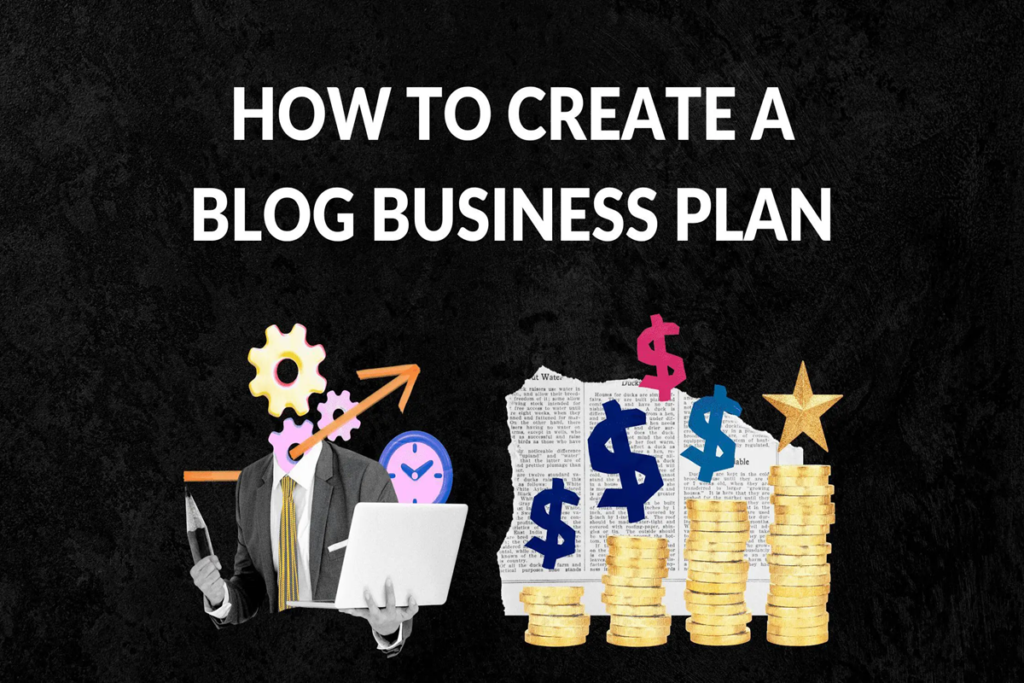Key Takeaways:
- Learn why a business plan is crucial for your blog’s success.
- Discover how to define your mission and goals.
- Find out how to conduct market research and SWOT analysis.
- Get practical tips on financial planning and marketing strategies.
11 Simple Steps for Crafting An Effective Blog Business Plan – Have you ever wondered if your blog needs a business plan? The answer is yes, especially if you intend to treat your blog as a business. A business plan can help you stay focused, attract investors, and achieve long-term success. In this post, we’ll guide you through 11 simple steps to create an effective business plan for your blog.
1. Define Your Mission
Your mission statement is the foundation of your blog. It defines what you aim to achieve and the values that drive your work. Ask yourself: What is my blog’s purpose? Who is my target audience? What unique value do I offer? For example, if your blog focuses on sustainable living, your mission might be to “inspire and educate readers to live more sustainably.”
2. Choose a Brand Name
Your brand name is your blog’s identity. It should be catchy, memorable, and reflective of your blog’s content and values. Think of names like “ShoutMeLoud” or “Problogger” – they are distinctive and convey a sense of purpose. Brainstorm, get feedback, and check domain availability before making your final decision.
3. Set Goals and Objectives
Setting clear, actionable goals and objectives is crucial. Break down your main goal (e.g., earning revenue) into smaller, manageable objectives. These could include increasing your posting frequency, improving SEO, or engaging more on social media. Make sure your objectives are SMART: Specific, Measurable, Achievable, Relevant, and Time-bound.
4. Conduct Market Research
Understanding your market is key to success. Research your niche thoroughly: Who are your competitors? What is the demand for your content? Use tools like Google Keyword Planner to analyze search volumes and trends. Identify your audience’s pain points and tailor your content to address them.
Before we dive into the next steps, don’t forget to subscribe to our newsletter for more tips on building a successful blog!
5. Develop a Marketing Plan
Your marketing plan should outline how you will attract and retain readers. Consider various channels like social media, email marketing, and SEO. Determine your budget and allocate resources to the most effective strategies. For instance, you might decide to run Facebook ads to boost traffic initially and then focus on organic growth through SEO.
6. Perform a SWOT Analysis
A SWOT analysis helps you identify your blog’s Strengths, Weaknesses, Opportunities, and Threats. Strengths could be your unique writing style or expertise in a niche topic. Weaknesses might include limited technical skills. Opportunities could be emerging trends in your niche, while threats might involve high competition.
7. Create a Financial Plan
A solid financial plan is essential. Outline your startup costs (like domain registration, hosting, and marketing). Estimate your potential income from ads, affiliate marketing, sponsored posts, etc. Create a budget that includes both fixed and variable costs, and project your cash flow for the first year.
8. Write the Executive Summary
The executive summary is a brief overview of your blog business plan. It should include your mission, goals, target audience, and strategies. Although it appears at the beginning of your plan, it’s often easiest to write it last, once all other sections are complete.
9. Include a Biography
Introduce yourself and any team members. Highlight your skills, experiences, and why you’re passionate about blogging. This builds credibility and helps readers connect with you on a personal level. If you have co-founders or contributors, include their bios as well.
10. Outline Your Financial Projections
Detail your expected income and expenses. Use realistic assumptions based on market research. Show how you plan to monetize your blog and forecast your revenue for the next 1-3 years. Include a break-even analysis to demonstrate when you expect to start making a profit.
11. Plan Your Exit Strategy
An exit strategy outlines how you will leave your blog business when the time comes. This could involve selling your blog, merging with another business, or simply winding down operations. Having a clear exit strategy can make your blog more attractive to investors and ensure a smooth transition.
Practical Tips:
- Regularly review and update your business plan.
- Seek feedback from trusted peers or mentors.
- Stay flexible and be prepared to pivot as needed.
Crafting an effective blog business plan may seem daunting, but it’s a crucial step towards turning your blog into a successful business. By following these 11 simple steps, you’ll have a roadmap to guide your blogging journey. Remember, planning is the first step towards achieving your blogging goals.
Ready to take your blog to the next level? Subscribe to our newsletter for more insights and tips!
What are your thoughts on creating a blog business plan? Have you tried it before? Share your experiences and questions in the comments below!




